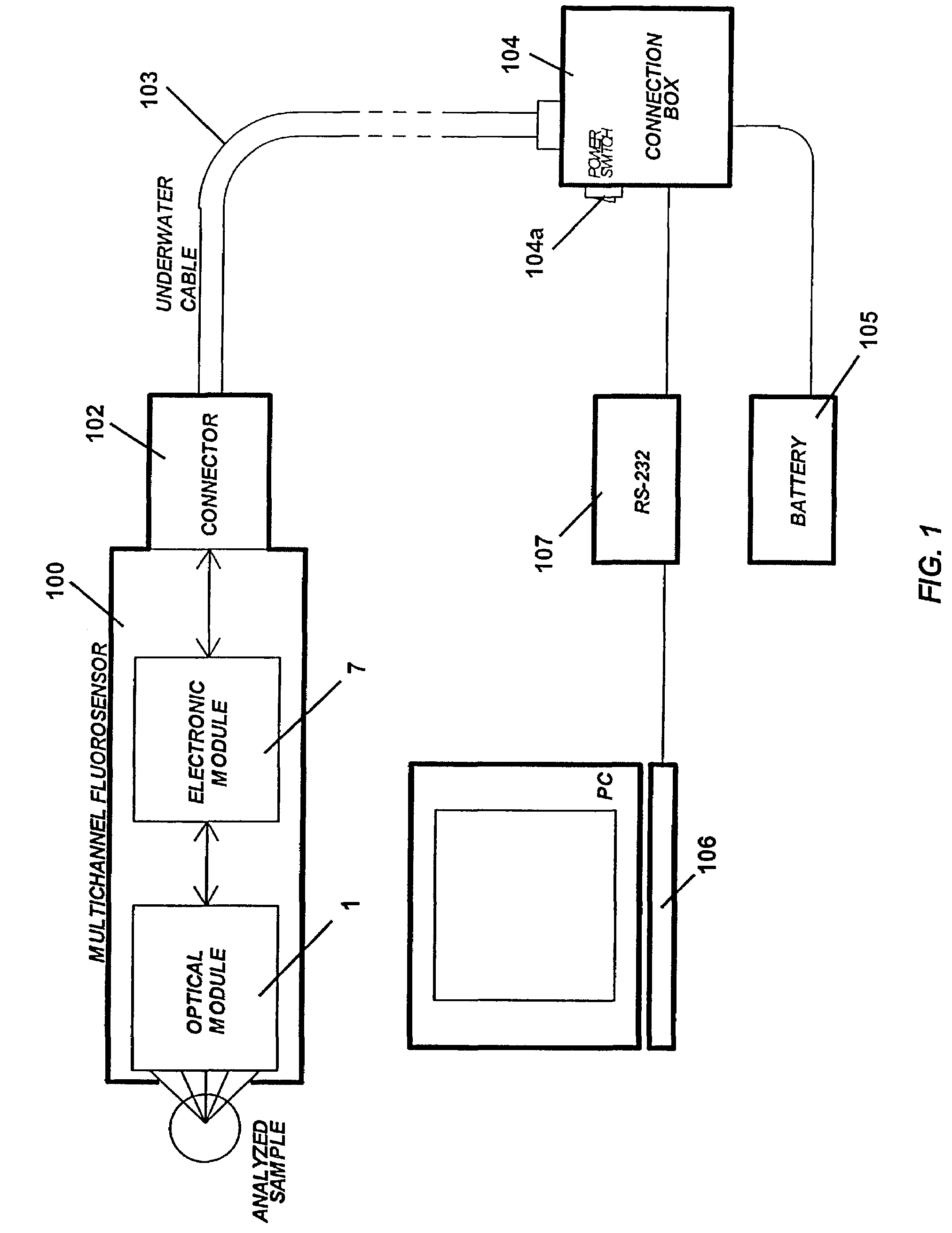Multichannel fluorosensor
a fluorosensor and multi-channel technology, applied in the field of optical methods and apparatus for measuring fluorescent substances in liquids, can solve the problems of limited availability, difficult, and high cost of methods, and achieve the effect of increasing the efficiency of this mutual focusing system
- Summary
- Abstract
- Description
- Claims
- Application Information
AI Technical Summary
Benefits of technology
Problems solved by technology
Method used
Image
Examples
Embodiment Construction
[0026]The block diagram of the multichannel fluorosensor is shown on the FIG. 1. The multichannel fluorosensor 100 according to the present invention, has a watertight housing 101 with a watertight connector matched with a cable connector 102 on a underwater cable 103. The multichannel fluorosensor includes an optical module 1 with excitation channels and emission channels and an electronic module 7 with analog and digital electronics. The underwater cable allows analysis of fluorescent samples in the body of water at depths and has a connection box 104 with a power switch 104a. The connection box is connected to a battery 105 and to a data processing device 106 through a port 107. That implementation of such components as the data processing device 106 and the port 107 may be of any conventional type known to those of skill in the art. For example, the data processing device may be a personal computer (PC), a handheld PC, a personal data assistant (PDA) or other device that can ope...
PUM
| Property | Measurement | Unit |
|---|---|---|
| Angle | aaaaa | aaaaa |
| Nanoscale particle size | aaaaa | aaaaa |
| Nanoscale particle size | aaaaa | aaaaa |
Abstract
Description
Claims
Application Information
 Login to View More
Login to View More - R&D
- Intellectual Property
- Life Sciences
- Materials
- Tech Scout
- Unparalleled Data Quality
- Higher Quality Content
- 60% Fewer Hallucinations
Browse by: Latest US Patents, China's latest patents, Technical Efficacy Thesaurus, Application Domain, Technology Topic, Popular Technical Reports.
© 2025 PatSnap. All rights reserved.Legal|Privacy policy|Modern Slavery Act Transparency Statement|Sitemap|About US| Contact US: help@patsnap.com



